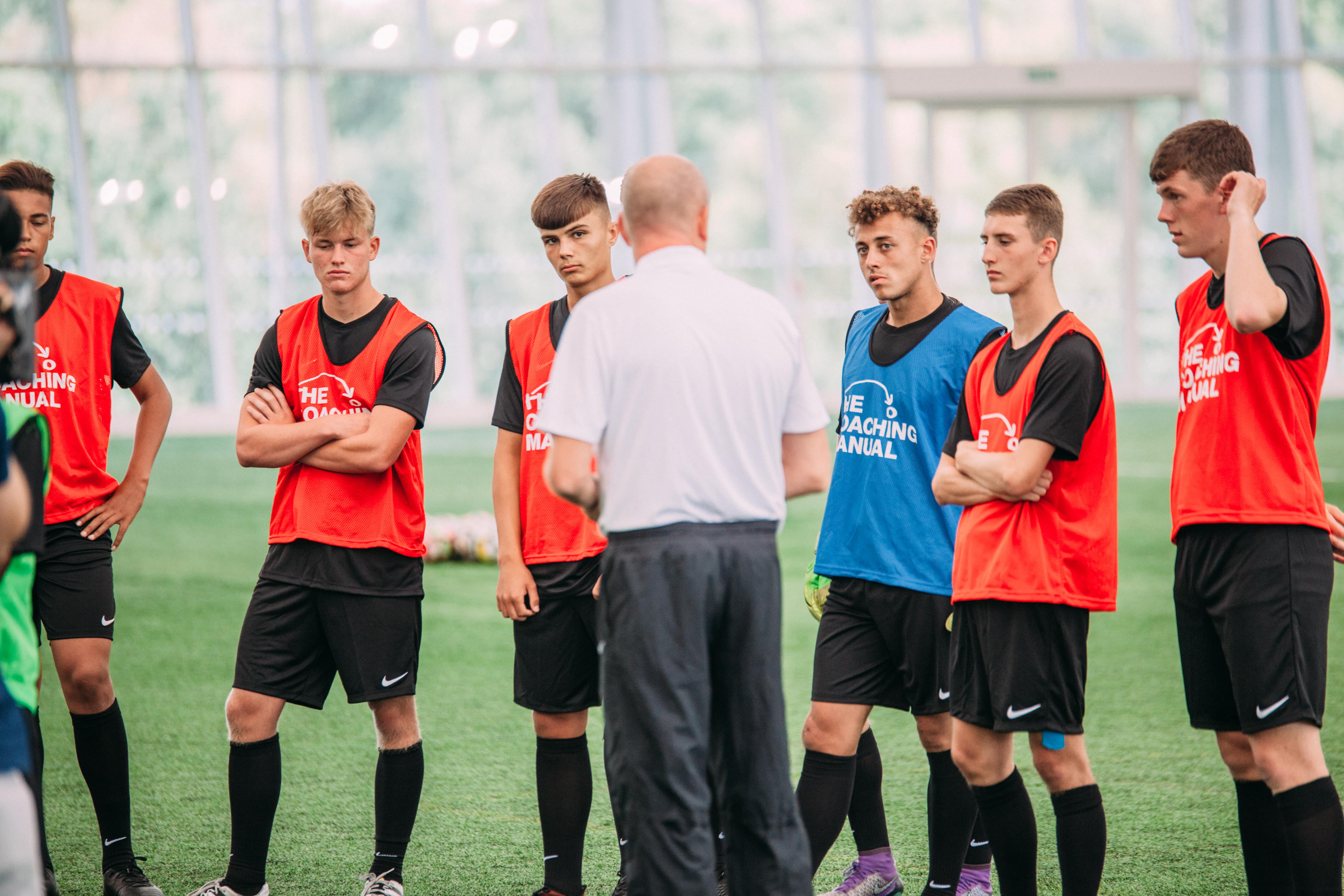Like it or not, soccer is ultimately a results game. You might have built a fantastic club culture, recruited a quality coaching team and be hitting your player development goals, but if your teams aren’t winning games, sooner or later your board are going to lose faith in your approach.
As a Director of Coaching (DOC), you shouldn’t be gearing all of your actions toward winning your next match. But it’s absolutely possible to implement a long-term strategy that can help you achieve short-term success. Here’s how to do it...
Tactical soccer coaching tips to help you succeed on the pitch
The following soccer coaching tactics and strategies are designed to fit naturally around your existing season plan, allowing you to provide guidance and strategies for winning matches without interrupting your wider coaching philosophy and player development plans.
Run demonstrations
When it comes to introducing new playing styles, tactics, formations and drills that will help you deliver results, a traditional tactics board can only get you so far. However well your coaches are able to explain themselves, there’s no substitute for physical demonstrations when it comes to relaying complex information.
But what does an effective demonstration actually look like? How can you be sure that you’re communicating key details in a way that your players can understand and adopt?
Interactivity is key. Don’t just show them what you want them to do; get them involved in the demo, explaining what (if anything) they’ve done wrong. Check out this training session from former Manchester United boss David Moyes to see exactly how this should work.
Build effective lines of communication
For your teams to be successful, you don’t need every player to be best friends. Likewise, your coaching team don’t necessarily need to like you. But it’s vital that everyone within the club is able to communicate effectively.
Players need to know that if they have a grievance, a concern, or simply an idea that could benefit the team, they’ll be able to speak to their coach about it without fear of judgement. And your coaches need to understand that they can escalate these issues to their DOC if necessary.
Without effective communication, simple training ground disagreements can quickly mushroom into something much more serious. And this can have a major impact on morale, ultimately damaging performances on the pitch.
Let players make their own decisions
There are three broad styles of leadership – autocratic, democratic, and laissez-faire. While a more autocratic approach may be required to steer a club through times of crisis, there are other instances in which a more democratic – or even laissez-faire – leadership style will help you to get the most from your players.
Empowering players to make their own decisions can help them gain the confidence and experience required to take decisive action when your coaches are unable to step in – in other words, during the pressure of a match. If your team are being overrun in midfield, there’s only so much the coach can fix from the sidelines; that’s when you want your players to step up and find a solution.
Learn what motivates individual players
People are motivated by different things. To use a well-worn cliche, some players will respond best to an arm around the shoulder, whereas others are more inspired by constructive criticism and the desire to prove people wrong. Your coaches should take the time to understand their players and get to know what makes them tick so that their motivational messages make the biggest possible impact.
Offer incentives and rewards
Continuing the subject of motivation, sometimes the most effective method is to offer a reward for hard work. Elite footballers are handed huge financial bonuses for finishing in a certain league position, winning a trophy or surviving a tight relegation battle.
While you (probably) don’t have the budget of a Premier League club, you can still provide an effective incentive for on-field success. Ask players what their incentive should look like. After all, they’re the ones you’re trying to motivate, so it’s vital that they’re bought in.
Praise players (at the right time)
Handing out praise should be simple, but it’s actually fraught with potential challenges.
First off, your coaches shouldn’t overuse praise. If players know they’re going to be applauded for everything – turning up to training on time, remembering their kit, paying their fees – then that praise loses its impact. It could even end up having a negative impact on motivation and performance.
On the other hand, positive behaviours should be recognised. Players need to understand that when they go the extra mile, their coach will notice and acknowledge it. If they never receive any praise regardless of their actions, why should they bother behaving positively and in line with your club culture and values?
Teach game management scenarios
To win matches, your players will sometimes have to battle through adversity. They’re unlikely to ease to comfortable 3-0 victories in every game; sometimes they’ll have to defend a lead after having a player sent off, or battle back from behind in the dying minutes. Running game management scenarios is the best way to prepare your players for the difficulties they’re likely to face in high-pressure match situations.
The Coaching Manual can help here. We’ve analysed seven common game management scenarios and provided clear instructions on how to overcome those specific challenges. What’s more, many of our professional-quality coaching sessions have been created with game management in mind.
Final thoughts
Ultimately, your coaches can only provide the tools to help their players win matches. It’s up to the players themselves to use those tools effectively and find ways to cope with difficult situations when they arise, rather than relying on their coach to find a solution. By using the methods detailed in this guide, you’ll be giving your players the best chance to succeed when the chips are down.



